LEWISTON — Many of Maine’s fire departments and emergency medical services are not equipped to handle potentially violent situations when they respond to calls. Before the Oct. 25 mass shooting, bulletproof vests were nothing more than a conversation for most crews.
Lewiston Fire Chief Mark Caron said he and other department administrators, crew members and the firefighters’ union have talked about putting ballistic vests in the budget in the past, but that never came to fruition.
With initial costs of $1,300 to $1,500 per vest, according to some fire chiefs and emergency directors, along with necessary special training, custom fitting, maintenance and more, the question “do we really need these” seemed to dominate those conversations.
Then came one of America’s worst mass shootings right in our own backyard.
“(Now), we are actively pursuing the purchase of protective vests for all our firefighters,” Caron said.
Fire chiefs across the state have told Caron that ballistic vests are becoming more popular, specifically with EMS personnel because dangers of the job have increased over the past few years. Caron also learned the costs are a concern for smaller departments which struggle to find the funding in their budgets to equip crew members.
“I can understand why some smaller departments may need to hold off on equipping their first responders with vests due to costs … but for Lewiston I think the time has come for us to make the purchase and equip our firefighters with ballistic vests for their protection,” the chief said.
Auburn Fire Chief Robert Chase said his department had ballistic vests on order for all on-duty crew members since before Oct. 25. He said that while the priority in violent situations is getting police to secure a scene, it doesn’t eliminate the need for protective equipment for firefighters and EMS crews.
“We have seen that not every situation is predictable,” Chase said. “While we have not yet received the vests, we are using grant funds to purchase enough vests for all of our on-duty crew members. The vests have been on order for some time. We are hoping to take delivery soon.”

Oxford Fire Deputy Chief Shawn Cordwell stands inside the fire station Wednesday morning on Route 26 in Oxford. Cordwell says his crew has ballistic vests and are encouraged to use them when responders feel the need. Russ Dillingham/Sun Journal
Oxford Fire Deputy Chief Shawn Cordwell said his crew has vests and are encouraged to use them when responders feel the need. However, while standard practice for Cordwell’s crew does not include wearing vests under their turnout gear, the world of first response is changing and the roles of firefighters, EMTs and other emergency responders are becoming more fluid.
“Managing violent scenes is actually something that EMS agencies have dealt with for years and years. We regularly do trainings and drills to educate ourselves on the latest threats and best practices to prevent injury for both the EMS workers and victims we treat,” Cordwell said. “We now do things we never thought we would.”
Oxford firefighter and EMT Thomas Ryan has 30 years of experience, including working as an emergency room technician at Central Maine Medical Center. Citing several instances across the country of first responders wounded or killed on calls, Ryan said the “big city issues” have been creeping into Maine for some time.
“Maine is no longer immune. … Society has changed and not for the better,” Ryan said. “It’s just not law enforcement officers anymore. … (Even) firefighters, EMTs and health care providers are no longer looked at as the ‘good guys.’”
Ryan said his experience wearing a ballistic vest in the line of duty has given him the peace of mind he says every non-law enforcement first responder should have.
Ryan isn’t alone in his concerns. A survey of Maine fire chiefs and emergency medical agency directors surfaced many concerns about first responder protection.
Angela Molino, Androscoggin County Emergency Management Agency director, said she is currently exploring avenues to obtain vests for responders throughout Androscoggin County, but costs go beyond just purchasing and outfitting everyone.
“Securing funding to supply all responders with vests is difficult, cost prohibitive,” Molino said. “If the vests were only used in response to those incidents that require protective gear as opposed to daily use, the lifespan of the vests greatly improves from five years to 10 years, affecting replenishment and maintenance costs.”
Molino said initial costs for a Level III vest, which is equipment typical for most law enforcement use, is about $1,300. That doesn’t include costs associated with fitting or training, she said.
Chase said it didn’t take much convincing to purchase the equipment despite the high costs, but it’s those ongoing costs that worry him. Ballistic plates must be replaced periodically, he said.
“We employ 68 responders, we have up to 16 floor staff on duty at any one time and up to four administrative staff that also respond,” Chase said.

Lewiston Fire Chief Mark Caron sits on the front bumper of a firetruck Tuesday morning at Central Fire Station on Bates Street in Lewiston. Caron and others have been considering the need to equip first responders with ballistic vests. Russ Dillingham/Sun Journal
In a email to the Maine Fire Chiefs Association, Yarmouth Fire-Rescue Chief Michael Robitaille said the benefits of investing in ballistic vests have far outweighed the costs for his department.
“Yarmouth Fire Rescue has carried them in our ambulances and chiefs’ cars for eight years,” Robitaille said. “Yarmouth was involved in (last year’s) first mass shooting in April. All responders arrived with vests on and nobody waited for clearance to enter.”
Robitaille said the department launched a proactive approach to hostile events, including active shooter situations, several years ago. The department also held a tactical combat casualty care training program centered around school shootings. This led to the purchase of six vests through a grant from the Cumberland County Emergency Management Agency.
In April, the Yarmouth department responded to the Interstate 295 shooting, during which three people were wounded when several cars were shot at on the southbound side of the interstate near Exit 15 in Yarmouth. That incident prompted the Yarmouth department to use remaining funds to buy vests for all career staff at the end of the year, Robitaille said.
“Since then, we consider this personal protective equipment and now issue them as standard equipment such as fire turnout gear,” Robitaille said. “I believe if you were to poll our staff, they will tell you they feel much safer. It is not uncommon to see them worn daily by members.”
Very early Wednesday morning in Minot, firefighters and rescue personnel responded to a report of a house fire and possible gunman.
Fire-Rescue Chief Dean Campbell said the department’s protocol is to stand down until police arrive and take control of the scene. “We don’t run into that situation very often,” he said, so the need for ballistic vests would “mostly be for the EMTs than for the firefighters.”
Campbell, who has been a firefighter for 30 years, said that situation on Woodman Hill Road was the first situation he’s encountered that would even have prompted a conversation about ballistic vests, because wearing them under all the gear firefighters are already wearing would be impractical.
“We already burden these guys with the turnout gear and fire packs, and then you throw that vest on underneath,” he said, it would be unsafe to do because of the added weight and possibility a crew member actively fighting fire may overheat and collapse.

Turnout gear is stored in a corner of the station Tuesday morning at Central Fire Station on Bates Street in Lewiston. Fire departments around central and western Maine have considered whether to add ballistic vests to their standard protective gear. Russ Dillingham/Sun Journal
He pointed out that there are some circumstances where it would make sense for firefighters to wear vests, like the situation on the interstate in Yarmouth, and even more circumstances where it would make sense for EMS workers to be equipped because they “have a tendency to get into more risky situations” that may involve potentially violent situations.
Dennis Russell, who is the operations manager for United Ambulance, said the thought of ballistic vests has been on the agency’s radar for a while, but he said his response crews shouldn’t be in positions where they may be in harm’s way and there are concerns that wearing vests would restrict movement when, say, carrying somebody down the stairs in a stair chair.
He also mentioned the high initial cost to buy vests within a tight budget, along with recurring costs to replace the gear.
Most importantly, though, he said United Ambulance “has a wonderful relationship with the Lewiston Police Department and they do a great job in that respect, in making sure we maintain a safe distance until they clear away any problems.”
When an ambulance crew goes out to Minot or Mechanic Falls on a call, Russell acknowledged it takes longer for police to respond to these more rural settings, but most of their calls are in the Auburn and Lewiston area.
Russell said “my staff is wonderful in terms of situational awareness. And does a vest, could it give you a false sense of security?” It might, and while he said they are responding to calls in areas where there is more crime and more shootings than in the past, he is confident that police support is their best protection.
“It’s something in the future we would look at,” Russell said, “but for the amount of calls that you would actually use it on,” vests are not an immediate priority.
When Rumford Fire Chief Chris Reed presents his 2024-25 budget next month to Town Manager Stacy Carter, the Finance Committee and selectmen, there will be a new line item not seen before: $15,000 for vests and other PPE materials for all 12 full-time firefighters and first responders. It’s something the department is presently working without, which Reed and the firefighters’ union agree should be a high priority.
“To me, it’s worth asking the public for $15,000 to protect their people because a stabbing or shooting of a first responder would be devastating,” said Reed.
Reed said getting these materials has been on his mind even before the Lewiston shootings. “Our community is plagued with drugs. With the high amount of drug use, alcohol use, mental illness, access to guns and the poverty, the opportunity (for an active shooter) here is high.”
Reed anticipates his firefighters and first responders might wear this protective gear 10 to 20 times a year.
Lewiston Lt. Derrick St. Laurent said in the case of major incidents like the Oct. 25 mass shooting, many agencies conduct critical incident debriefs that deal specifically with how additional equipment and training could be beneficial in the future.
Larger cities have made ballistic vests for EMTs and paramedics standard practice, St. Laurent said, and that over the past several years security personnel at Central Maine and St. Mary’s Regional medical centers have been wearing ballistic vests.
“There is obviously an expense involved,” St. Laurent said. “Each vest needs to be custom fitted to the first responder and the vest does have a shelf life — five years I believe.”
Auburn Deputy Police Chief Tim Cougle said working closely with fire and ambulance crews is paramount for safety, especially when a call is in progress, but “in our line of work, there are always known and unknown risks that we must deal with.”
He said, “The idea of ballistic vests being available to all first responders is important and can provide an additional layer of protection.”
Waiting for police response isn’t a luxury Greenwood Fire and Rescue Chief Kenneth Cole’s department often has. Greenwood is about 20 minutes away from the Oxford County Sheriff’s Department in Paris, the only dedicated law enforcement for the area.
Often called out to domestic disturbances and potentially violent calls, some 12 volunteer firefighters and EMTs arrive at scenes unprotected from gunshot or stab wounds. Many rural towns in Maine face the same dilemma, he said.
Cole said he is a firm advocate for departments acquiring and supplying vests for all first responders.
“Police and ambulance crews may be faced with significant travel delays, especially in poor road or stormy conditions,” Cole said. “Officers responding have bulletproof vests and firearms and training to protect themselves walking into these situations — the firefighters have zero protection.”
Cole said he is hoping to acquire 12 vests for his department. “My roster is higher than that, however not all make every call, as we are volunteers.”

Oxford Fire Deputy Chief Shawn Cordwell stands inside the fire station Wednesday morning on Route 26 in Oxford. Cordwell says his crew has ballistic vests and are encouraged to use them when responders feel the need. Russ Dillingham/Sun Journal
Dedham/Lucerne Fire Chief and EMA Director Craig Shane said his small department of three, four including himself, carries four vests and three spares for per-diem EMTs. While responses to violent situations, specifically gunfire, are usually quite low, he and his crew have the constant worry of potential conflict involving mental health and overdose calls. With mutual aid agreements throughout Hancock County and Penobscot County, along with other towns including Brewer, Bucksport and Ellsworth, the stakes are higher.
“We have determined that it’s now a necessary evil of our job,” Shane said. “We want to be equally protected from an assault or a stabbing. Obviously, we do need to be prepared for the ‘mass casualty, active shooter situation’ as well.”
Shane said the cost to outfit himself, three other full-timers and stocking three spares was about $1,500 per vest, or around $10,500.
After broaching the subject of protective equipment with Gov. Janet Mills during her Oct. 27 visit to CMMC, Oxford firefighter Ryan said keeping the dialogue going and looping in the Department of Public Safety and Maine EMS has been impossible.
In response to Sun Journal inquiries, Mills’ Press Secretary Ben Goodman and Maine EMS Director Wil O’Neal echoed similar sentiments that all first responders should have access to the equipment they need, but that those needs will have to be identified and pursued by each department.
Goodman said the governor recognizes demands on emergency first responders are always changing and, as a result, equipment and training will have to change with those demands. However, the demands of urban departments and rural departments may not necessitate the same kind of changes some may hope for.
“The governor supports individual agencies and departments having these discussions to determine what equipment changes, if any, may be best for their communities and their first responders,” Goodman said. “Many of these discussions and decisions occur locally, and communities may try to utilize federal grants to help purchase new equipment.”
O’Neal said Maine EMS does not have a position for or against the use of ballistic PPE and does not regulate such use. Maine EMS has not received any formal requests or proposals to create rules or request data from agencies, but the conversation has been ongoing for some time on the national scene, he said.
For example, some agencies are seeing a rise in large, organized protests, which pose safety concerns for first responders unprotected from potential violent outcomes.
“In addition to the challenge of providing EMS inside and around these sometimes-tense environments, modern EMS services may be responding more frequently into other uncontrolled, large crowd environments,” O’Neal said.
Greene Fire Chief John Soucy said vests are not a priority for his department. Soucy said conversations in the past determined needs will be different from area-to-area and, in Greene, there’s currently no need for them based on past responses.
Similarly, Livermore Falls Fire-Rescue Chief Nathan Guptill said in his 21 years of being a firefighter, including serving as chief in Turner, he has never felt threatened going into someone’s house, though he has thought about the absence of ballistic vests.
Jay, Wilton and Farmington departments also don’t have protective equipment.
Jay Fire Chief Mike Booker said his department just doesn’t have the budget. Farmington Fire Chief Tim “TD” Hardy said his department has thought about purchasing equipment, but isn’t planning on it at this time.
In Oxford, Ryan said communities can no longer afford to continue putting first responders in harm’s way without the equipment they need to stay safe out on their calls. The state needs to find a way to fund it or to streamline available resources for departments to apply for gear, he said.
“Money seems to be the root cause of department heads, chiefs and city government for not purchasing (vests),” Ryan said. “Grant money requests must be written in such a manner as to justify the awarding of X numbers of dollars. If not written properly, the request is denied, (meanwhile) firefighters, EMTs of all license levels, and health care providers are being asked to do more and more every day with limited staffing and financial resources.”
Rumford Falls Times Editor Bruce Farrin, Bethel Citizen staff writer Rose Lincoln, Franklin Journal staff writer Brian Ponce and Sun Journal staff writers Donna Perry and Judith Meyer contributed to this report.
Send questions/comments to the editors.


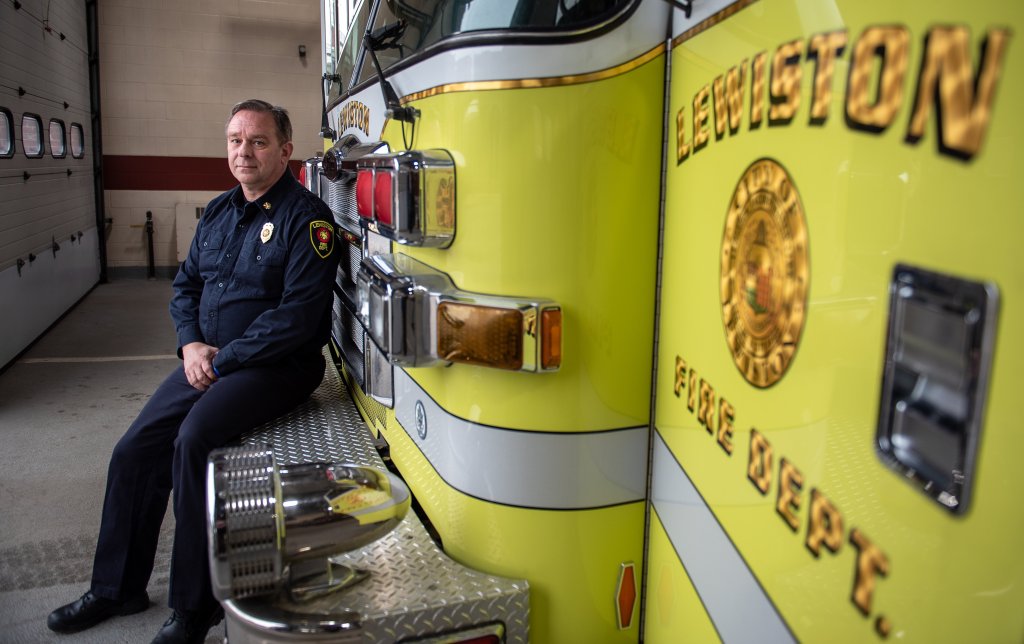
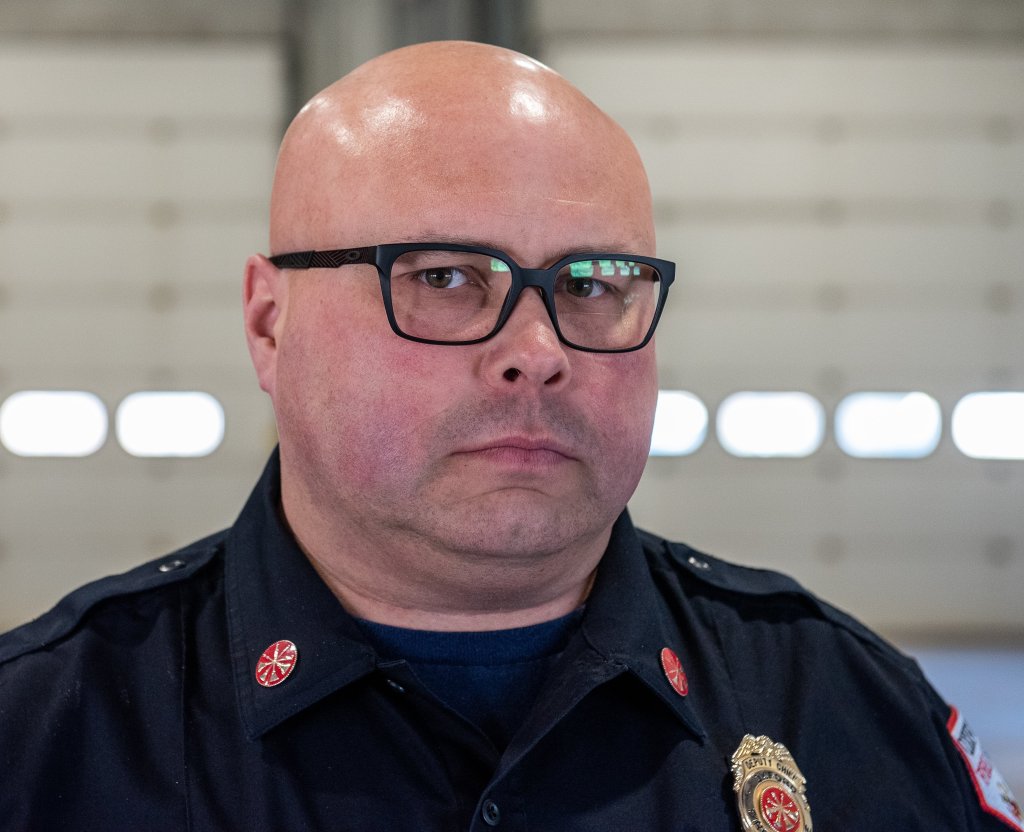
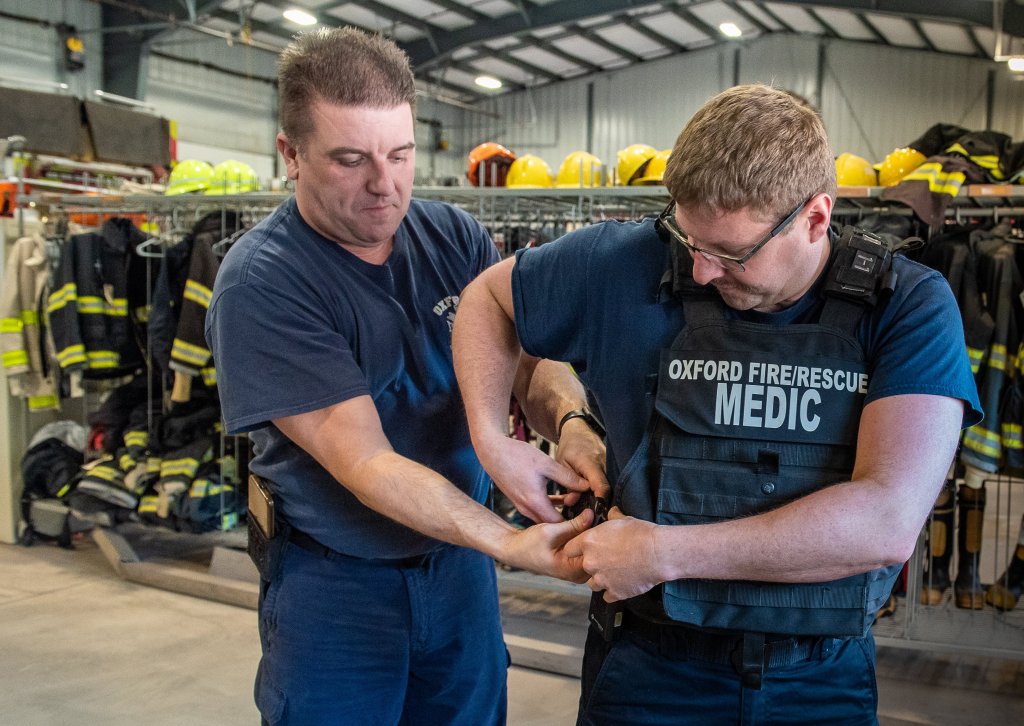
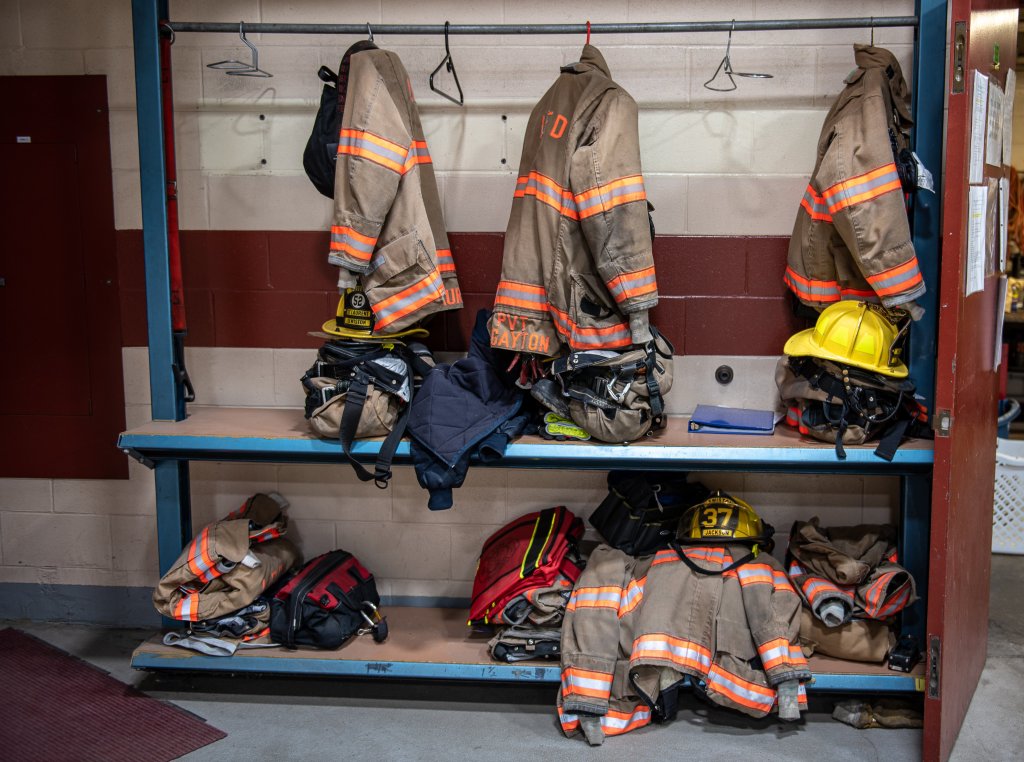
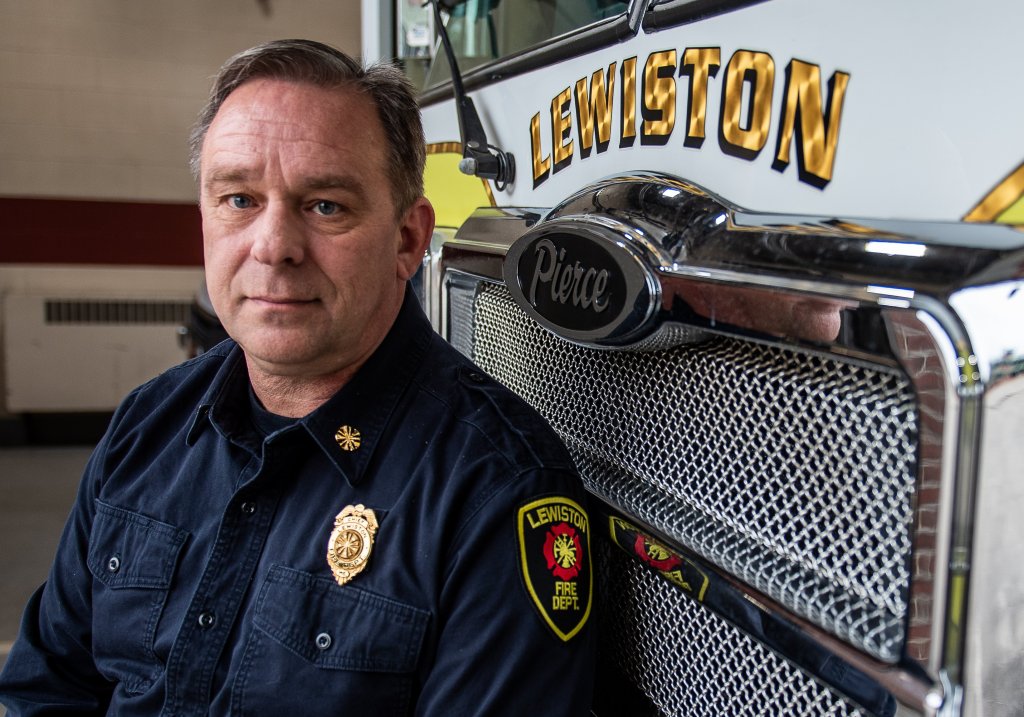
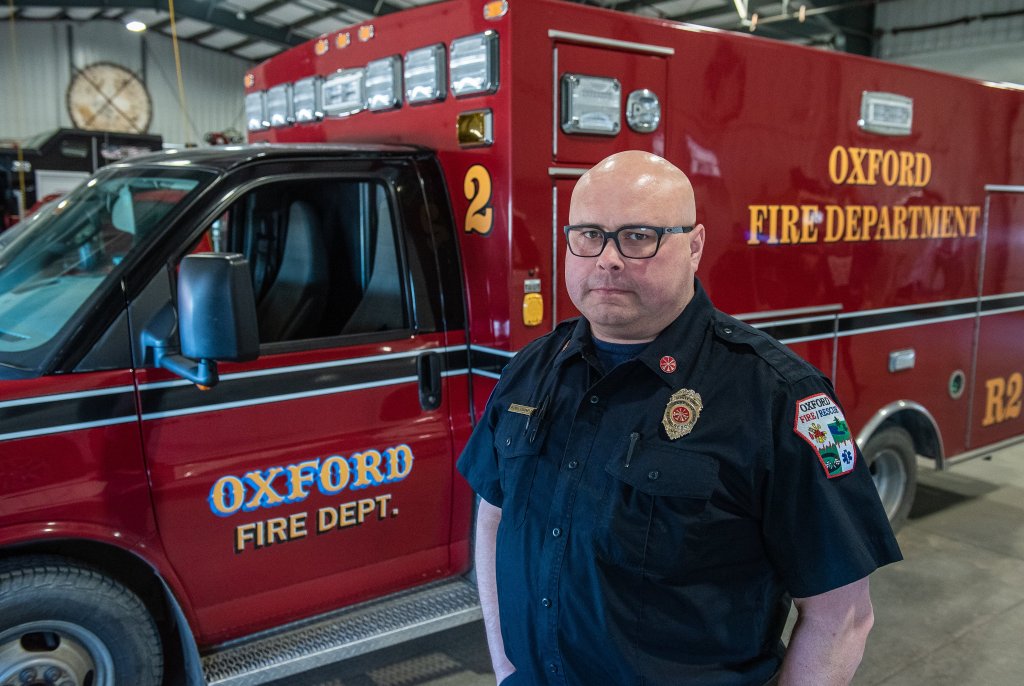

Comments are no longer available on this story